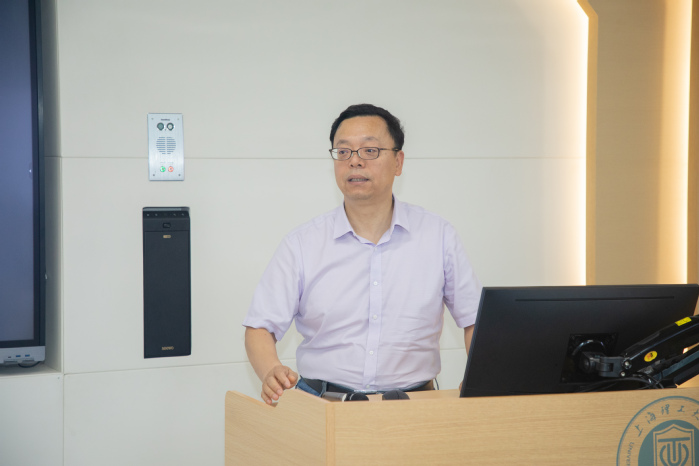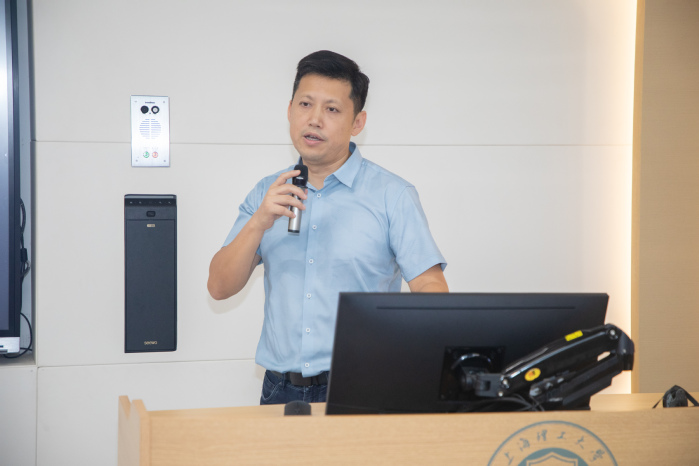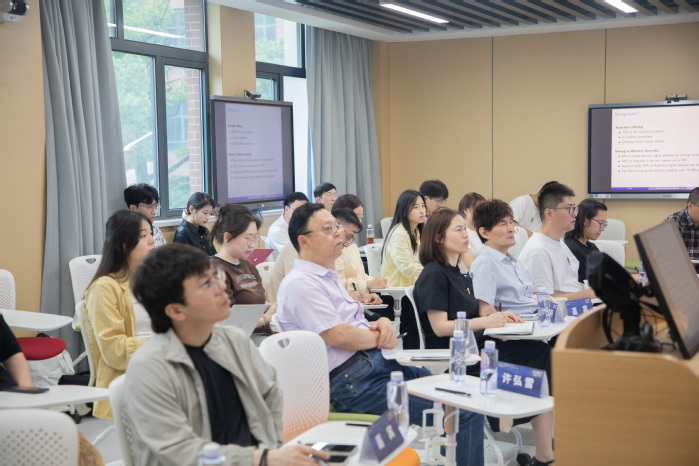On June 12th, the practical management course “Hujiang Observation” was held at the Jungong Road Campus. Associate Professor Xu Honglei from the School of Electrical Engineering, Computer and Mathematical Sciences at Curtin University, Australia, delivered a report entitled “Optimal Control Methods for Open-Pit Mine Planning and Design”. The report was presided over by Zhao Laijun, Dean of the Business School and Director of PDEC. Attendees included Gu Changgui, Director of the Department of Systems Science and Program Leader of Systems Science and Engineering, Li Junxiang, Director of the Smart Emergency Logistics Management Laboratory, Liu Qinming, Director of the Department of Industrial and Systems Engineering, and other faculty members and students.

Xu Honglei first explained the central position of the mining industry in the Australian economy, especially the significance of Western Australia as a global hotspot for mining investment. He emphasized that open-pit mining is the main mining method in Australia, and its planning and design need to strike a balance between economic benefits, market changes, and safety and environmental protection. Traditional mining planning methods have limitations when dealing with fluctuations in mineral product prices. They struggle to respond quickly to market changes and often fail to fully consider the complexity of actual mining operations.

In response to these challenges, Xu Honglei highlighted two innovative optimization strategies proposed by his team. Firstly, it’s the optimization of the pit shape under the optimal control framework. This strategy transforms the open-pit mine planning and design into an optimal control problem, aiming to maximize the total economic benefits throughout the entire mining, processing, and sales workflow. Secondly, it’s the receding horizon control strategy. Given the pain point that medium- and long-term planning is significantly affected by market fluctuations, the concept of “rolling optimization” is adopted, which remarkably enhances the flexibility and efficiency of short-term planning. By sharing the application of these strategies in lithium mine projects in Western Australia, he demonstrated the value of dynamic optimization.

During the Q&A session, the faculty and students present had in-depth exchanges with Xu Honglei on topics such as model parameters selection, the impacts of different geological conditions on mining processes, practical mining operations, and requirements for ecological restoration in mining areas.
In the concluding remarks, Zhao Laijun stated that the technological innovations of the Australian mining industry is of great reference value for China’s manufacturing industry. In the future, the Business school will continue to deepen cooperation with Curtin University and build a high-level international exchange platform for the faculty and students.
Translated by Wei Xin
Reviewed by Liu Weiwei


